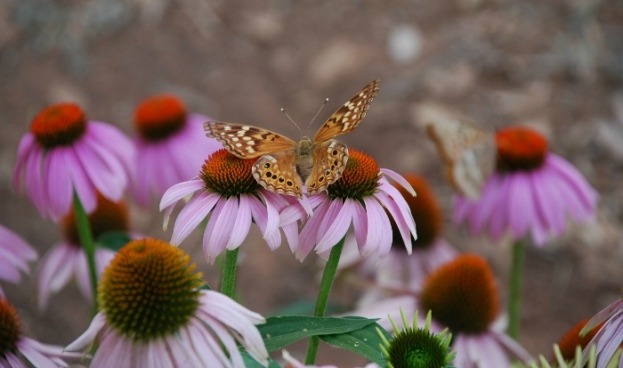To plant a garden is to believe in tomorrow.
—Audrey Hepburn
To plant a garden is to practice hope. When we dare to plant a garden — and it does take daring! — we embody the kind of hope that William Sloane Coffin called "a passion for the possible." This speaks to me of a deep, divine source of unfolding possibilities — a divine urgency for beauty and well-being on a landscape becoming more distressed by the minute. This divine passion describes a great suffering heart, a patient lover, a deep tenderness, everything needed to plant a garden.
Harnessing this hidden universe of possibility and passion, we need a patch of earth that is small and manageable and ours, a place among the particulars, the quotidian, the spade and the soil, the work of our hands. Such a quiet and ordinary act takes us out of ourselves and into the invisible web of connection that keeps the earth spinning in its orbit. It takes not only passion and persistence to plant a garden, but courage too, especially in the face of enemies like Japanese Beetles, who are eating every plant in sight where I live.
This week, on a nature walk, I discovered that hope shows up in wild gardens, too, as I encountered bright, purple coneflowers in a field of nondescript weeds. These unabashed purple beauties stopped me in my tracks, and I stared in a sort of wonder for their sheer pluck against the impossible weeds all around them. These wild things had no gardener but chance, and they were flourishing against the odds. Perhaps this is our calling in these days of fear and trembling: to be bright purple coneflowers amid a reckless array of weeds.
In her book The Impossible Will Take a Little While: A Citizen's Guide to Hope in a Time of Fear, Victoria Safford writes: "Our mission is to plant ourselves at the gates of hope — not the prudent gates of Optimism, which are somewhat narrower; nor the stalwart, boring gates of Common Sense; nor the strident gates of self-righteousness, which creak on shrill and angry hinges; nor the cheerful, flimsy garden gate of 'Everything is gonna be all right,' but a very different, sometimes very lonely place, the place of truth-telling, about your own soul first of all and its condition, the place of resistance and defiance, the piece of ground from which you see the world both as it is and as it could be, as it might be, as it will be; the place from which you glimpse not only struggle, but joy in the struggle — and we stand there, beckoning and calling, telling people what we are seeing, asking people what they see."
That's courage, that's pluck, that's the kind of garden I want in my backyard — and most certainly in my soul. If I simply make a vow to "plant myself at the gates of hope" every day and encourage others to do the same, I wonder how long fear's work in the world could last? How long can the bullies and beetles go on eating up all the goodness and loveliness? How long can despair keep up its routine against this tide of stubborn and courageous beauty? It would surely be overrun by mad, wild, relentless purple coneflowers.
Practicing hope these days means planting possibilities wherever and whenever we can, and to do so with all the passion we can muster. We may not see the results in our lifetime, but we can trust that the seeds of hope we plant will take hold someday, somewhere, in someone. So let us plant something at the gates of hope today.

 "H" is for Hope
"H" is for Hope